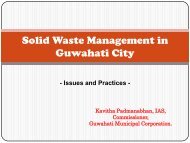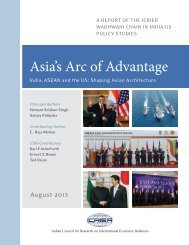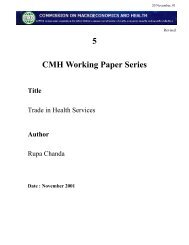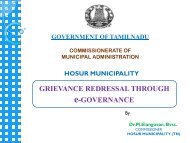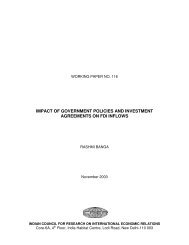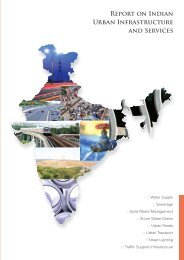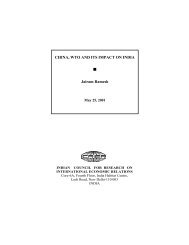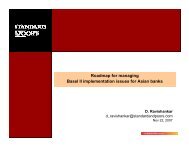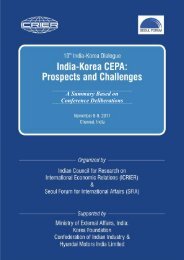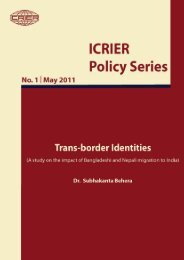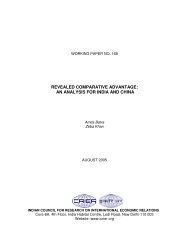Export Processing zones in India
Export Processing zones in India
Export Processing zones in India
Create successful ePaper yourself
Turn your PDF publications into a flip-book with our unique Google optimized e-Paper software.
There has been a considerable simplification and rationalization of union excise duties as<br />
well. Beside reduction <strong>in</strong> the number of rates, the tax has been progressively converted from a<br />
specific <strong>in</strong>to ad valorem levy <strong>in</strong> respect of a majority of commodities. Furthermore, the multipo<strong>in</strong>t<br />
excise duties were converted <strong>in</strong>to a modified value-added (MODVAT) tax, which enabled<br />
manufacturers to deduct excise paid on domestically produced <strong>in</strong>puts and countervail<strong>in</strong>g duties<br />
paid on imported <strong>in</strong>puts from their excise obligations on output. This change significantly<br />
reduced the taxation of <strong>in</strong>puts. In the case of corporate <strong>in</strong>come taxes, the rates were progressively<br />
reduced on both domestic and foreign companies to 35 per cent and 40 per cent respectively. The<br />
said rates are also subject to exemptions and deductions thereon as may be notified from time to<br />
time.<br />
Furthermore, several tax and non tax <strong>in</strong>centives <strong>in</strong> the form of capital subsidies<br />
(permissible) and concessional credits are offered by the central and state governments to<br />
domestic firms outside the zone similar to those with<strong>in</strong> it. <strong>Export</strong> <strong>in</strong>centives take the form of duty<br />
drawback, i.e., a refund of central excise and customs duties levied on raw materials and<br />
components used <strong>in</strong> the manufacture of exports, import replenishment to replace imported raw<br />
materials and components used <strong>in</strong> the manufacture of exports, duty entitlement pass book<br />
scheme, advance licence scheme, airfreight subsidy on the export of certa<strong>in</strong> products and credit<br />
facilities from approved f<strong>in</strong>ancial <strong>in</strong>stitutions at pre-shipment and post-shipment stages, export<br />
promotion of capital goods (EPCG scheme) which allowed import duty of 5% on capital goods.<br />
Two other tax exemptions are : tax exemption of 100% on export profits for ten years (upto<br />
2009-10) for new <strong>in</strong>dustries located <strong>in</strong> Electronic Hardware and Software Technology Parks and<br />
100% <strong>Export</strong> Oriented Units and deduction of 50% of export profits from the gross total<br />
<strong>in</strong>come 6 .<br />
One may also observe that tax <strong>in</strong>centives are offered to zone units on central taxes only.<br />
Zones are not exempted from state level taxes. Table 10 shows that <strong>in</strong> almost all the <strong>zones</strong> units<br />
are subject to stamp duties, Octroi, cess and contract tax . In Ch<strong>in</strong>a where the SEZ have been<br />
highly successful <strong>in</strong> attract<strong>in</strong>g FDI , units are offered exemptions not only from the national taxes<br />
but also from the local taxes.<br />
6 The deduction would be restricted to 30% for f<strong>in</strong>ancial year 2003-04 and no deduction is<br />
allowable subsequently<br />
24



